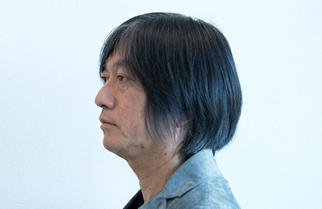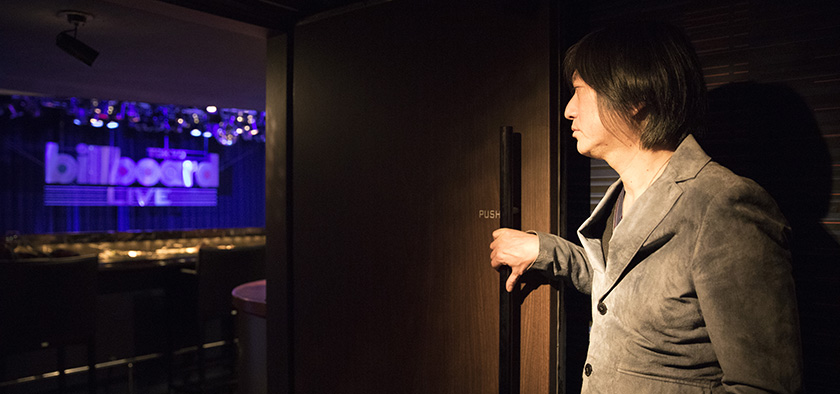
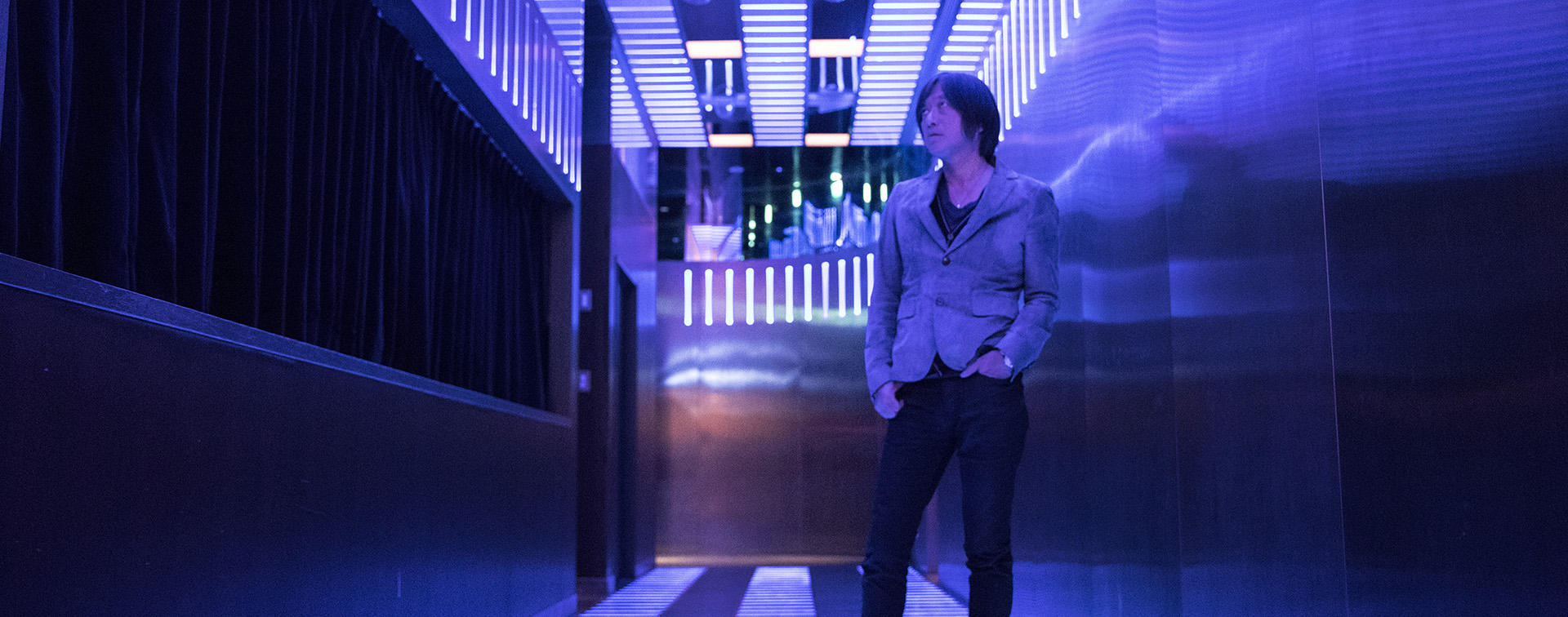
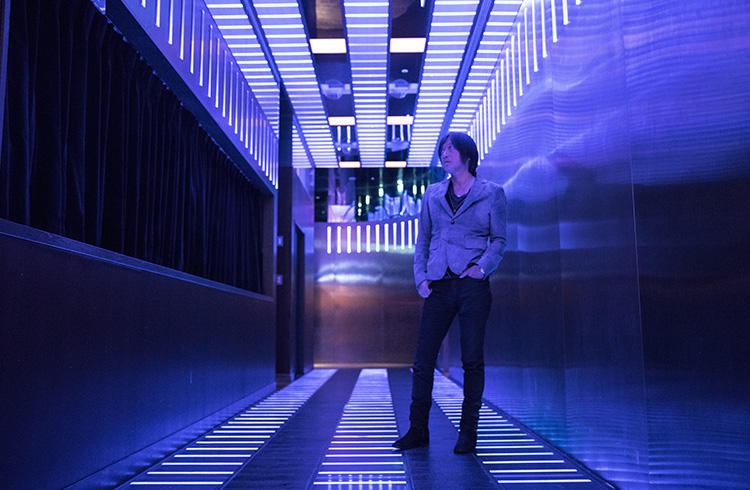
INTERVIEW
91
Takeshi KobayashiMusician / Music Producer
Using art in the city to express life
Embracing the dynamic energr of nature
Takeshi Kobayashi is one of the top musicians in Japan who has released numerous outstanding works. While his activities are centered on music, Kobayashi has ventured into other fields such as art, design, food and agriculture in recent years. His activities have led to the creation of new values and helped people make new encounters. Roppongi is an area filled with different cultures. We asked Kobayashi about the potential he sees in cities. Answering this question and others, he went on to talk about nature and its ways - aspects which modern rationalistic society tends to forget.
Satisfying my intellectual curiosity in Roppongi
I think Roppongi is a place that has changed considerably through the years. The earliest memory I have of Roppongi is in the '60s. At that time, the Italian restaurant Chianti in the neighboring town of Iikura was famous; it was a glamourous salon for grownups where all kinds of cultural figures would gather. Among its patrons was Yuming, who was then in her teens. The encounters Yuming made at Chianti led to her debut [as a singer]. I belong to a slightly younger generation than Yuming and at that time, I hang out at Shimokitazawa and Mishuku; Roppongi was yet a distant place for me. But I knew about the intellectual atmosphere and culture of Iikura and Roppongi.
Roppongi later became more multicultural and it came to have a slightly cluttered atmosphere. Then in the '80s, Roppongi WAVE and Cine Vivant Roppongi were built, and I think these establishments created a new culture in Roppongi.
Cine Vivant Roppongi
A movie theater that opened in 1983, the same year that the record shop Roppongi WAVE opened. The first movie shown at the theater was "Passion" directed by Jean-Luc Godard, who, along with filmmakers such as François Truffaut and Louis Malle, led the French New Wave (La Nouvelle Vague) movement. The theater showed mainly European art films and ignited a boom in "mini-theaters" or independent movie theaters in Japan. It was closed in 1999.
I started working as a studio musician around that time, and I would often go to the recording studio Sedic Studio which was on the highest floor of the building that also housed WAVE and Cine Vivant. I would often go out of the studio to buy CDs and books at WAVE. After taking a break like that, I would go back to the studio and resume recording. At the end of the day, I would go to Cine Vivant to see a movie before going home. That was my routine at that time.
I had a membership at Cine Vivant. That movie theater gave me opportunities to see all kinds of art cinema such as "The Spirit of the Beehive" and "El Sur" by Víctor Erice. The movies shown at Cine Vivant were intellectually very satisfying.
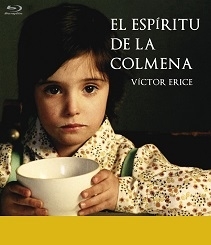
Víctor Erice
Spanish movie director and screenwriter. "The Spirit of the Beehive" which was released in 1973, won great acclaim and the movie has been repeatedly shown in movie theaters in Japan. Erice's other major works are El Sur (1983) and Dream of Light (1992). While Erice has released short omnibus works, he has made only three full-length feature films, and is known as a non-prolific director.
Retailer: IVC
Price: DVD 3,800 yen plus tax Blu-ray 4,800 yen
Concerns about the place becoming mediocre
I once saw Tetsuya Komuro-san in the corridor of Sedic Studio - it was in the late 1980s. In those days, there were many rock bars in Roppongi that were open during the night. There were also many entertainment agencies dotted around the Roppongi and Iikura areas.
Looking back at those days, I realize Roppongi used to be very much a night town. I don't know if it was a good or bad thing, but Roppongi used to be an edgy and wild place. But then a big transformation began after Roppongi Hills and Tokyo Midtown were built. Roppongi turned into a place of design, art and fashion. It was around that time that the streets became sophisticated - offering places worth visiting during the daytime. For instance, I recently went to the "Leandro Erlich: Seeing and Believing" exhibition at the Mori Art Museum. The exhibition was also very popular with children; families walking in Roppongi during the daytime have now become a familiar sight.
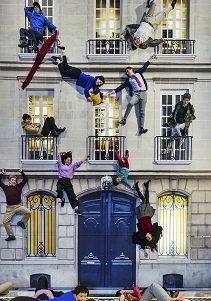
"Leandro Erlich: Seeing and Believing" exhibition
An exhibition held at Mori Art Museum from Nov. 18, 2017 to April 1, 2018. Leandro Erlich is a contemporary artist born in 1973 in Buenos Aires, Argentina and who lives there. In Japan, he is known for the "The Swimming Pool", a permanent installation displayed at 21st Century Museum of Contemporary Art, Kanazawa. At the Mori Art Museum exhibition, a total of 44 works, including new works were exhibited, with 80% shown in Japan for the first time. The number of visitors came to 610,000, marking the second highest on record for the museum.
"Building" 2004/2017 Photograph by Kenta Hasegawa Courtesy of Mori Art Museum and Galleria Continua
I think it's wonderful that Roppongi is changing into a place where many people of all generations gather. But if there's one thing that I'm concerned about, it's the possibility that the whole of Roppongi - in trying to please the masses - will become mediocre. It would be such a pity if that happened.

Extreme elements shape the times and culture
Nowadays, there are issues concerning compliance and security, and a lot of research is being made, and I feel that it's become more difficult to do drastic things. So it's very important to ask ourselves what kind of area we want Roppongi to be, and to contemplate the possibilities. I say this because I believe that it's the extreme elements that essentially shape our times and culture.
The same thing can be said about music. There is music that has been composed with the masses in mind. It's a mediocre kind of music that results from considering the highest common factor. There's a part of me that is also conscious of the masses. But as a musician, I also like to go into dark places. (laughs) The essence of music is defined by the small details. In other words, music should have both extremes of high and low. I think both are necessary for music and for us psychologically.
Speaking of extremes, people seem to think that it's extreme for me, a musician, to be involved in farming. Whenever I appear on the J-WAVE (81.3 FM) program at Roppongi Hills, the host says, "Kobayashi-san, you are doing farming in Chiba, right?" The host always says that no matter which program I'm on, so it's apparently a subject that cannot be avoided. (laughs) It would be fun to try agricultural activities in the middle of Tokyo and see what happens.
J-WAVE (81.3 FM)
An FM radio station known for coining the term "J-POP" (Japanese pop music); the radio station's use of the term from 1988 to 1989 defined and created a new genre of music. In 2003, the station relocated from Nishi-Azabu to the 33rd floor of Roppongi Hills Mori Tower. From March 2016 to March 2017, Kobayashi hosted J-WAVE's "Hitachi Systems Heart to Heart" program that airs every Sunday from 10 p.m. Kobayashi currently appears as a guest on J-WAVE programs such as "Good Neighbors" and "The Hangout".
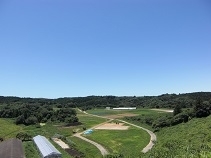
kurkku fields
An agricultural facility that is scheduled to open in the future to let visitors enjoy farming and eating fresh produce. After setting up ap bank, and thinking about environment and energy issues, Kobayashi said he felt the need to provide new lifestyle options. In 2005, he set up "kurkku", a company that operates restaurants, cafes, bars and food stores. In 2010, Kobayashi set up an agricultural production corporation called "Tagayasu". The scheduled facility "kurkku fields" is planned to be set up within the grounds of Tagayasu, where organic crops and eggs are being produced.
The concepts of "city lifestyle" and "country lifestyle" seem out-dated
Perhaps it may seem that the combination of city and farming is extreme. But I have a desire to make the challenge; I'd like to find out if there is something in the soil in sophisticated Roppongi that can link with the dynamic aspect of nature. I'm not proposing that we set up a lofty goal like becoming self-sufficient in food. I just think that instead of relying on the connections of local people and things, there is potential in trying out extreme, contrasting things in places that have none of those connections.
I feel that from now on, it will become more important, particularly in the cities, for people to get in touch with the dynamic energy of nature. In Tokyo, the best place for such encounters would be Roppongi, don't you think? Roppongi is suitable because it has an innovative, playful spirit. Also, taking a wider viewpoint, I think it's no longer possible to completely separate the nature-rich countryside from the cities. The notion of separating city lifestyle from country lifestyle will probably fade away in the future. The development of IT has shrunk the gap between the countryside and the cities. I myself use a lot of IT in my work.
Speaking of IT, there is often talk about the advances in AI (artificial intelligence) taking away the work of people, but I'm not too worried about that. What really matters about being human will become clearer to us and I think that precisely because we are entering the AI age, we should be incorporating nature in our lives. We ought to connect and blend things that are seen as opposite extremes. I probably want to act like a sort of catalyst.
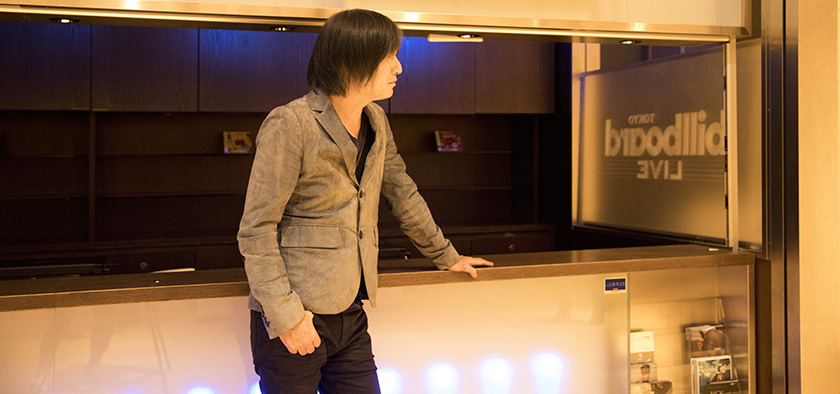
The art of living
Fundamentally, humans are also a part of nature. These days, the thought often comes to me that we humans are just one part of all the life that exists on this planet. Instead of drawing lines between people and animals, and between humans and nature, we should look at how the whole of nature is working. That way I think we will come to realize the various measures that need to be taken. There is a wonder in the ways of nature.
But an appreciation for nature is not something that can be suddenly prompted - you can't tell people to have it. Everyone is so busy with their daily lives. Some kind of device or plan is needed to trick people into thinking about nature so that they begin to see its fascinating ways.
I believe that art is an effective means of reminding people about nature. Last year, we held an art festival called "Reborn-Art Festival 2017" for 51 days mainly in Ishinomaki and Matsushima Bay in Miyagi. The plan for the festival was drawn up two or three years after the Great East Japan Earthquake; we gave it shape by getting hints from events such as the Echigo Tsumari Art Triennale and the Setouchi Triennale.

Reborn-Art Festival 2017
A festival of art, music and food held for 51 days from July 22 to September 10 in 2017 at Oshika Peninsula, Ishinomaki City and Matsushima Bay in Miyagi Prefecture. Exhibitions were made of works by contemporary artists both in Japan and abroad and various programs were held. From July 28 to July 30, a three-day event dubbed "Reborn-Art Festival & ap bank fes" was held during which well-known musicians such as Mr. Children held live performances.
http://www.reborn-art-fes.jp
Kohei Nawa
White Deer (Oshika) 2017
©Reborn-Art Festival Photograph by Shuji Goto
The most important thing for me about this festival is to bolster the zest for life in the Tohoku region. The word "art" comes from the Latin "ars". It means the art of living. People have lost so much in Tohoku, but the problems of the region need to be tackled. Rather than having a large, outside force such as from Tokyo coming to revive the region, I wish to see Tohoku drawing on its own, inner powers to resurrect itself. So instead of doing just an event just once or only sporadically, I felt we needed to take a step further and help create the environment. That's why we made the decision to keep holding the Reborn-Art Festival for 10 years.
The Inside Out Project - telling the untold stories of individuals
Seven years have passed since the disaster, but in the afflicted areas, there are negative aspects that have surfaced with the passing of those years. As the temporary houses are pulled down, connections with people are severed, and there are many people who are feeling lost and unstable. There are also people who feel that things haven't worked out as they had hoped, and they are experiencing impatience and anxiety. When I see the reality of such circumstances, it's clear that before incorporating art, there is the need to provide medical support.
All the same, I do think there is a role for art, and that there is potential in art; I hope that art will infuse people with the energy to live, making them feel truly alive. With that hope, one of the projects we held at the Reborn-Art Festival was the Inside Out Project with the French artist JR.
The Inside Out Project is an art project which was started by JR in 2011. From large cities to war zones, JR goes to all sorts of different places and pastes enlarged portraits of the people who live there; it is a project that aims to show the untold stories of the individuals. At the Reborn-Art Festival, a truck equipped with a photo studio drove around the Oshika Peninsula and in the towns; photos of the residents were taken and the portraits were put up all over the streets.
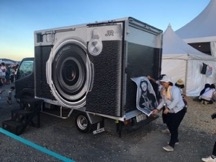
JR
A French artist and activist born in 1983. Based in Paris and New York, he carries out projects around the world. Taking photographs of people worldwide who live in poverty or who suffer oppression and discrimination, JR works with the locals to paste the portraits on outdoor walls. As part of his Inside Out Project that he undertakes globally, he came to Japan in 2012; driving a truck equipped with a photo studio and a large-format printer, he traveled through the earthquake-hit Tohoku region, taking portraits of people and pasting the images in the streets. The project attracted wide attention. In 2013, JR's works were exhibited at the Watari Museum of Contemporary Art in Tokyo; it was his first solo exhibition in Asia.
In my view, the Inside Out Project projected the authentic voices of the locals saying, "I live here." Maybe those voices are not being properly heard in contemporary rationalistic society - maybe the people are being alienated. But art gives people a voice and that is what resonates with people. I think it's much better to aim for a future where people can empathize with each other through art. And the Inside Out Project actually did resonate with the surrounding environment. The project emanated the energy of life - the dynamic, raw energy. And to me, that is what nature is about.
Working as a musician and crossing borders
I wonder what it would be like if JR's Inside Out Project were held in Roppongi. For instance, Roppongi Art Night and Reborn-Art Festival could collaborate, taking photos of visitors to Roppongi Art Night and pasting their portraits in the streets of Roppongi. Roppongi is a representative place of Tokyo and the project might infuse the place with an energy that has never been felt here before - it might offer people an experience that changes the way they look at the city, making them notice new things. How marvelous if the project could have that sort of effect.
In July this year, we'll be holding the "ap bank fes" in Kakegawa, Shizuoka, for the first time in six years. I've visited Tohoku many times for the Reborn-Art Festival, and there are people I've become acquainted with. I'd been wondering how I could put the connections I've made to good use, and I decided to go back to basics and hold the ap bank fes. Geographically, Shizuoka is located right in the middle of Japan, and I'm hoping that the event there will lead to people making new encounters.
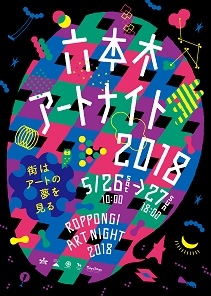
Roppongi Art Night
An annual one-night festival held in the streets of Roppongi which started in 2009. During the event, the whole area of Roppongi becomes filled with a wide range of art works, music, movies and performances. The event seeks to give visitors unusual experiences and to promote a new lifestyle of incorporating art in everyday life. In 2018, the all-night event was held May 26-27. Installations were placed in the streets and performances were made based on the theme of "The City Dreams of Art."
http://www.roppongiartnight.com/

ap bank fes
An outdoor festival that aims to raise environmental awareness. While enjoying live music, food, and art, visitors are encouraged to think about energy issues and the creation of a sustainable society. The first festival was held in 2005 in Tsumagoi, Kakegawa City, Shizuoka Prefecture. "ap bank fes '18" will be held for three days from July 14 (Sat) to July 16 (Mon/national holiday), with a pre-event on the 14th. This year, for the first time in six years, the festival will be held in Tsumagoi. Bank Band and Mr. Children are scheduled to perform in the first act.
Whether making music or planning art festivals, it's very difficult to create things that are moving. The degree of self-consciousness affects what you create. The ideal is to be as unselfconscious as possible - to be as close to nature as possible so that you end up with what you were meant to create. That's how beautiful, nature-emulating architecture is created. When you are happy, you hum to yourself without knowing it. That state of unselfconsciousness is what we should aim for.
As a musician, I wish to continue to act as a catalyst so that people can make meaningful encounters and get together to create things. A person who makes music is called a composer; composing means gathering materials and giving them structure. Composing consists of realigning, exchanging and linking things. That's what I've always done in music and I wish to do that in other fields too. When you cross over into other boundaries, it becomes possible to gain new perspectives. Different ways of looking at things is what diversity is about, and I believe diversity will become vital from now on.
(Photographs were taken at Billboard Live Tokyo)
Editor's thoughts
Kobayashi-san said that the word "art" originates from the Latin word "ars" and that it means the art of living. Art certainly is not limited to what we see in art museums in glass cases; art is essentially something that is inherently in each one of us. By interviewing Kobayashi-san, I felt that through his many different activities, he is inspiring people and helping to awaken their inner strength.(text_nanae mizushima)
RANKING
ALL
CATEGORY




